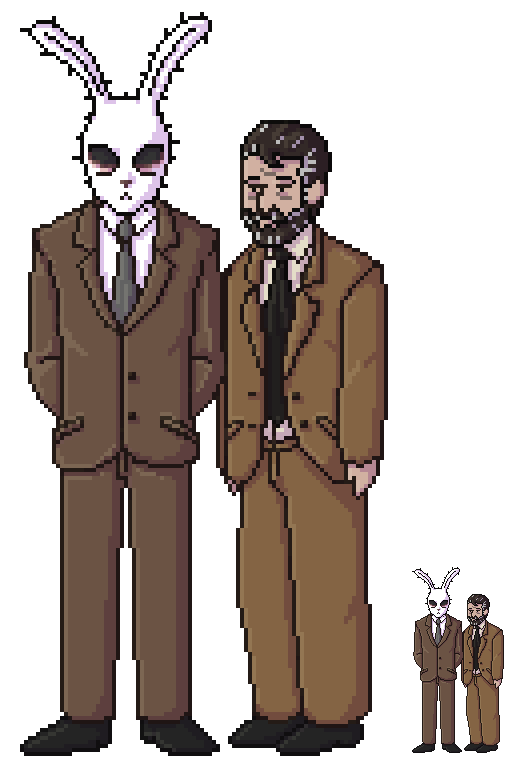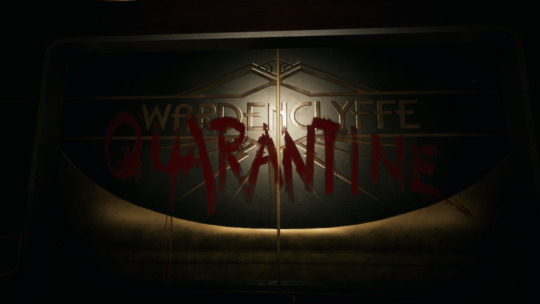#of course it's referenced on this one ''jumpscare'' in the mind puzzle sequence
Explore tagged Tumblr posts
Text

Guess who started learning pixel art? :D
I'm mostly following tutorials as of now, but I had to try to make something for/by myself. And if course I needed it to be these two.
#pixel art#beginner pixel art#cube escape paradox#dale vandermeer#mr rabbit#david eilander#rusty lake#fanart#of course it's referenced on this one ''jumpscare'' in the mind puzzle sequence#the pic feels wonky to me but it was really fun to make!#btw the small picture on the right is the 1:1 scale
164 notes
·
View notes
Text
Close to the Sun: “Creepy ship full of scientists in the middle of the ocean. What could possibly go wrong?”
Close to the Sun, a first person horror game courtesy of Storm in a Teacup and Wired Productions, has been out on PC for a while, but it only made it to consoles this week. Protagonist Rose travels to the Helios, a floating science utopia run by Nikola Tesla in an alternate universe, in order to save her sister Ada from uncertain doom. As she points out early on, “Creepy ship full of scientists in the middle of the ocean. What could possibly go wrong?”
Well, quite a lot, given that she arrives on a seemingly-abandoned ship full of death and destruction and the situations really only gets worse from there.
Close to the Sun is a horror game in a well-crafted atmosphere, whose slight technical hiccups don’t fully detract from the intriguing world building and quality scares along the way; full review and very slight non-specific spoilers below:
youtube

The Helios, the sprawling cruise-ship/scientist-utopia which you journey through has a distinct and pleasing visual style; the horror elements imposed on top of sleek labs, beautiful reception halls and maintenance tunnels are consistently creepy, with enough variation and occasional break in the horror to prevent audience fatigue. The world is covered in plenty of small world-building details, including Tesla’s plans to keep the Helios safe from Edison’s spies, and furious memos from maligned maintenance workers.
The game also makes good use of its audio, even going so far as to change the sounds of your footsteps depending on which surface you’re currently walking on, which admittedly did make me think that there was someone creeping up behind me the first time I noticed it.
That may also be a testimony to the excellent job Close to the Sun does of creating a spooky atmosphere; dark lighting, creepy noises and a fair few jumpscares all work well to keep the player just a little twitchy as you make your way through the ship. Some jumpscares, of course, were scripted, others happened at the edge of the screen or, occasionally, somewhere behind me when I was too busy trying to read posters on the wall. There were even a handful which were so clearly signposted that I was able to take a minute to steel my resolve before triggering them - and then jumped anyway, which is again a sign of a decent horror game (or that I am too easily spooked for many horror games, but that’s another story).
Rose is a particularly pleasing character to play as in such an environment, largely because she quickly decides that she’s had enough of all this nonsense rather than nobly suffering in boring silence; her muttered “I really hate this place” after one particularly nasty jumpscare neatly mirrored my own feelings about the whole thing. Throughout the game, we hear and see her actually react to the horrors in front of her, making her feel far more realistic than many other horror protagonists over the years. In a small but delightful detail, the design of Rose’s hands and legs (the only parts of her we see, given the first-person perspective) are altered throughout the game, with rips appearing in clothes after fights, and bloodstains covering her next gloves after a particularly gory discovery.
Being a journalist, Rosie is most decidedly not a fighter, and her only option when confronted with a threat is to run and hide; this leads to a few chase sequences which instant death should you mess it up, but the game is generous enough with its save points that retrying a sequence isn’t too onerous. It’s also worth mentioning that the first chase sequence in the game spooked me when I watched someone else play the demo, spooked me when I played the demo and then spooked me again when I played it again this afternoon.
In a fun move for a horror game, there is no dedicated button for “crouching”, which made me feel weirdly vulnerable. How else was I supposed to hide from monster if I couldn’t duck behind or under convenient bits of furniture? It turns out that, should such tasks be required, the game would give me interactable button prompts - which, unfortunately, had a tendency not to work unless they were lined up just perfectly with the cursor, an annoying handicap in certain sequences. There were also some frame-rate issues in some of the tenser sequences, as well as a particularly annoying electricity puzzles that I really thought had autosaved me in an unwinnable position until I figured out just what the heck was going on.
The game has no inventory, map or map-markers, not even a journal in which to record codes to unlock safes or doors, which took a moment to get used to and did require me to chant codes over and over while navigating Rose back to the right lock. The game does offer, however, a mini-menu with your current objective and a list of collectibles available for each level; most considerately for a horror game with only one save slot and no manual saving at all, there is the option to replay specific chapters from the opening menu, which will greatly reduce the frustration for any players who just need to collect all the things.
However, it must be said that this is a relatively short game; I completed it in more or less a single sitting (with two quick breaks to make yet more tea) and there’s even an achievement available for completing the game in less than three hours. While I’ll happily admit that the game manages to fit a heck of a lot of world-building and quality scares into that short time-frame, the end of the game did leave me with certain questions still unanswered and a handful of plot threads which had been dangled in front of the audience and then seemingly set aside.
Essentially, given that the main characters being openly discussing multiple realities and timelines very early on in the game, I was somewhat surprised by the very linear nature of the storyline. Hints of possible paradoxes - such as seeing ghost images of actions yet to be completed, or how the chief antagonist for much of the game referenced Rose’s behaviour at an event which she’d never attended - were overlooked in favour of yet another chase sequence, rather than the attempt at cutting the thread or breaking the circle that I had been anticipating.
Such loose threads might be a convenient hook upon which to hang a sequel, or they might just be fun questions for me to turn over in my mind when I head back to the Helios in search of my last few collectibles.
#close to the sun#close to the sun game#storm in a teacup#wired productions#xbox#xbox one#playstation#playstation 4#Nintendo#nintendo switch#horror game#game review#spooktober#themachiavellianpig plays
8 notes
·
View notes